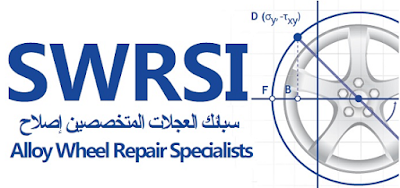
Sometimes a car drives as pretty as it looks. Such is the case for the 2020 Audi RS 7 Sportback, a sexy hatchback with gobs of refined power and room for five. Audi has brought it back for a second generation and it is downright yummy.
First things first: Thank you Audi for deciding to sell this powerful mutation of an A7 back as well as the RS 6 Avant wagon in the U.S. We did not want to lust for German goodness from afar.
The 2020 RS 7 goes on sale on our side of the ocean next year, likely in the spring, and MotorTrend lingered after the Frankfurt auto show to spend a day driving it around town and on the autobahn to get an early taste. Spoiler alert: we liked it a lot.
The car got 1.6 inches wider to make it a five-passenger family sedan—Audi says it lost customers because it lacked a fifth seat—but this is a car for hip parents, with flared wheel arches, muscular sides, and a blacked-out grille. The wider stance is glaringly evident when you drive on narrow European roads. In the U.S. it will only be a plus with wider lanes and wider bodies being stuffed inside. The only parts shared with the A7 are the hood, roof, front doors, and liftgate.


There is more differentiation between the RS 7 and the A7/S7, now that the RS 7 has a wide body, V-8, and different suspension dynamics to offer a daily driver that can also be a performance sedan.
The RS 7 is blessed with a throaty V-8, which is becoming an endangered species. With a 591-hp, 590-lb-ft 4.0-liter twin-turbo V-8, the car was developed to do 305 km/h on the Autobahn which translates to a190 mph top speed with the Dynamic plus package. The additional 40 hp and 74 more lb-ft from the previous RS 7’s powertrain should shoot the car from 0-62 in 3.6 seconds.
Read our impressions of the last-gen RS 7’s Performance model here.
Acoustics were engineered to ensure the cabin is quiet at that speed. It is. You hear the gorgeous tones as you accelerate, but it quickly fades into the background and the cockpit is quiet. For the U.S. market, the exhaust will be louder and more pronounced, we are told, and it can be turned on and off.
The car is now a mild hybrid with the same 48-volt system as the A6 and A7. The belt alternator starter can recover up to 12 kW and allow the car to coast in European markets—no coasting in North America. It has start-stop, cylinder deactivation when not all cylinders are needed, an eight-speed automatic transmission and all-wheel drive.
Adaptive air suspension will be standard. The 2020 RS 7’s system is 50 percent stiffer than in the A7 but still designed to provide a comfortable ride and offer more differentiation between Comfort and Dynamic modes. The optional sport suspension with a Dynamic Ride Control system has steel springs and uses a front left and a right rear damper, hydraulically connected crosswise under the car. It is stiffer and offers a sportier ride. The air suspension was slightly less engaging but the DRC could be felt in the tailbone on some rough pavement. On good roads it was hard to discern a difference; both suspensions were a joy to drive and steady as a rock at high speeds on the autobahn.
In addition to Comfort, Efficiency, Auto, and Dynamic modes, there are new RS1 and RS2 drive modes with a button on the steering wheel to customize your settings and do a systems check of your tire pressure, power, torque, oil temperature, boost pressure, lap times, acceleration, and g-forces.
The cars were surprisingly comfortable considering they rode on 22-inch summer tires. In the U.S. the choices are 21-inch all-seasons or 22-inch performance tires. Europeans can get 21-inch winter tires with chains, 22-inch winter tires or 22-inch summer tires.
There is enough feedback from the road and the car to make you feel like you are truly steering this car as opposed to it driving you. Available rear-wheel steering requires less input to slide the car into the next lane by allowing the rear wheels to turn as much as two degrees in the same direction. It is a subtlety that was lost on us, but the ability to turn the rear wheels in the opposite direction at low speeds gives the car a tight turning radius.
Smooth progressive ceramic brakes, which are optional, are easy to modulate.


The 2020 RS 7 lives up to Audi’s reputation for designing some of the best interiors in the business. I liked the optional red-trimmed seatbelts, stitching, and lighting. Standard interiors will have stitching that blends in or no stitching at all. The sport seats are heated and ventilated for the first time, but lack a massaging function. You can get Audi’s Virtual Cockpit digital instrument cluster, flat-bottomed leather steering wheel with shift paddles, and optional trim in carbon, wood, or aluminum for the look that best suits your personality. The cabin is sporty but also comfortable and quiet, a must for the China market with its many speed bumps and back-seat passengers.
The RS 7 goes on sale in Germany at the end of the year and we are expecting it to arrive in North American dealerships next spring or later. Pricing has not been announced but this performance beauty is likely to start about $120,000. For anyone in the market in that price range, the 2020 RS 7 will not disappoint.
The post 2020 Audi RS 7 Review: As Pretty to Drive As It Looks? appeared first on MotorTrend.
Source: WORLD NEWS
